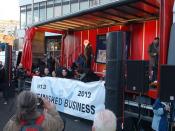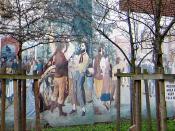The current state of organized labor can best be summarized by Terence O'Sullivan president of the Laborers Union in his address at the 2005 laborers Convention he says, "I honestly believe it, and I'm ashamed to say it: The labor movement is on life support". With this being said just because organized labor is on the decline does not mean that managing human resources will be easier. Actually, it makes Human Resources Management more of a challenge with the new challenges of e-business and globalization. It's out with old and in with the new, the challenge continues.
The purpose of this paper is to define organized labor and its impact to Human Resources Management within an organization. Additionally, examine impact of changes in employee relations strategies, policies and practices on organizational performance. Finally, I will provide my augments to the question of, "are unions still relevant in the United States"?
Organized labor refers to a group of workers in an industry who sell their own skill in exchange for an income they negotiate with the management.
While these negotiations may occur on an individual basis, many wage negotiations occur between employees who have organized into a group called a labor union (formed to improve the members' wages and working conditions) and managers. This group wage- and benefit-negotiating process is called collective bargaining.
The Labor Union is an association formed by labors in any organization to obtain by collective action improvements in pay, benefits, working conditions, and social and political status. Trade unionism as a movement emerged in Great Britain, Europe and the United States in the 19th century. In many countries it is termed as labor movement.
Before 19th century the employees and the employer directly negotiated the terms and conditions of employment. The difference in bargaining powers of employees...


